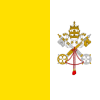All language subtitles for Free_CCNA__Network_Devices__Day_1__CCNA_200-301_Complete_Course(720p).mp4
 Afrikaans
Afrikaans
 Akan
Akan
 Albanian
Albanian
 Amharic
Amharic
 Arabic
Arabic
 Armenian
Armenian
 Azerbaijani
Azerbaijani
 Basque
Basque
 Belarusian
Belarusian
 Bemba
Bemba
 Bengali
Bengali
 Bihari
Bihari
 Bosnian
Bosnian
 Breton
Breton
 Bulgarian
Bulgarian
 Cambodian
Cambodian
 Catalan
Catalan
 Cebuano
Cebuano
 Cherokee
Cherokee
 Chichewa
Chichewa
 Chinese (Simplified)
Chinese (Simplified)
 Chinese (Traditional)
Chinese (Traditional)
 Corsican
Corsican
 Croatian
Croatian
 Czech
Czech
 Danish
Danish
 Dutch
Dutch
 English
English
 Esperanto
Esperanto
 Estonian
Estonian
 Ewe
Ewe
 Faroese
Faroese
 Filipino
Filipino
 Finnish
Finnish
 French
French
 Frisian
Frisian
 Ga
Ga
 Galician
Galician
 Georgian
Georgian
 German
German
 Greek
Greek
 Guarani
Guarani
 Gujarati
Gujarati
 Haitian Creole
Haitian Creole
 Hausa
Hausa
 Hawaiian
Hawaiian
 Hebrew
Hebrew
 Hindi
Hindi
 Hmong
Hmong
 Hungarian
Hungarian
 Icelandic
Icelandic
 Igbo
Igbo
 Indonesian
Indonesian
 Interlingua
Interlingua
 Irish
Irish
 Italian
Italian
 Japanese
Japanese
 Javanese
Javanese
 Kannada
Kannada
 Kazakh
Kazakh
 Kinyarwanda
Kinyarwanda
 Kirundi
Kirundi
 Kongo
Kongo
 Korean
Korean
 Krio (Sierra Leone)
Krio (Sierra Leone)
 Kurdish
Kurdish
 Kurdish (Soranî)
Kurdish (Soranî)
 Kyrgyz
Kyrgyz
 Laothian
Laothian
 Latin
Latin
 Latvian
Latvian
 Lingala
Lingala
 Lithuanian
Lithuanian
 Lozi
Lozi
 Luganda
Luganda
 Luo
Luo
 Luxembourgish
Luxembourgish
 Macedonian
Macedonian
 Malagasy
Malagasy
 Malay
Malay
 Malayalam
Malayalam
 Maltese
Maltese
 Maori
Maori
 Marathi
Marathi
 Mauritian Creole
Mauritian Creole
 Moldavian
Moldavian
 Mongolian
Mongolian
 Myanmar (Burmese)
Myanmar (Burmese)
 Montenegrin
Montenegrin
 Nepali
Nepali
 Nigerian Pidgin
Nigerian Pidgin
 Northern Sotho
Northern Sotho
 Norwegian
Norwegian
 Norwegian (Nynorsk)
Norwegian (Nynorsk)
 Occitan
Occitan
 Oriya
Oriya
 Oromo
Oromo
 Pashto
Pashto
 Polish
Polish
 Portuguese (Brazil)
Portuguese (Brazil)
 Portuguese (Portugal)
Portuguese (Portugal)
 Punjabi
Punjabi
 Quechua
Quechua
 Romanian
Romanian
 Romansh
Romansh
 Runyakitara
Runyakitara
 Russian
Russian
 Samoan
Samoan
 Scots Gaelic
Scots Gaelic
 Serbian
Serbian
 Serbo-Croatian
Serbo-Croatian
 Sesotho
Sesotho
 Setswana
Setswana
 Seychellois Creole
Seychellois Creole
 Shona
Shona
 Sindhi
Sindhi
 Sinhalese
Sinhalese
 Slovak
Slovak
 Slovenian
Slovenian
 Somali
Somali
 Spanish
Spanish
 Spanish (Latin American)
Spanish (Latin American)
 Sundanese
Sundanese
 Swahili
Swahili
 Swedish
Swedish
 Tajik
Tajik
 Tamil
Tamil
 Tatar
Tatar
 Telugu
Telugu
 Thai
Thai
 Tigrinya
Tigrinya
 Tonga
Tonga
 Tshiluba
Tshiluba
 Tumbuka
Tumbuka
 Turkish
Turkish
 Turkmen
Turkmen
 Twi
Twi
 Uighur
Uighur
 Ukrainian
Ukrainian
 Urdu
Urdu
 Uzbek
Uzbek
 Vietnamese
Vietnamese
 Welsh
Welsh
 Wolof
Wolof
 Xhosa
Xhosa
 Yiddish
Yiddish
 Yoruba
Yoruba
 Zulu
Zulu
Welcome to my complete CCNA, Cisco Certified
Network Associate course. This is Jeremy’s IT Lab. Since this is the first video, allow
me to introduce the course. This course aims to be a complete course for the CCNA, including
everything you need to pass the exam, all 100% free.
There will be lecture videos covering every topic on Cisco’s official exam topics list,
practice quizzes covering the material in each lecture, flashcards to help you review
and remember what you learned, practice labs using Cisco’s network simulation software
Packet Tracer, and at the end multiple practice exams to get you ready for the real thing.
Although this course will be based on Cisco’s official exam topics list, I also want to
give you extra information to improve your understanding of networks in general. That
additional context should also help you understand the exam topics. Because this is the first video in the series,
I want to talk about who this course is for. This course is for anyone who wants to pass
the CCNA 200-301 exam. At the time of recording this video, this is a new exam that isn’t
released yet, but will be coming on February 24th, 2020. Although a lot of the information
will overlap with the old CCNA, the course will be based on the exam topics for the 200-301
exam This course is for anyone who wants to learn
about computer networking. You don’t necessarily have to take the CCNA 200-301 exam, this course
will cover lots of valuable information regarding computer networking even if you’re not aiming
for the CCNA. The only requirement for this course is that
you have a basic familiarity with computers. I will cover all of the foundational networking
knowledge at the beginning of the course, so you don’t need any prior knowledge of
networking, and you also don’t need to know programming or anything like that to start
this course. With no further ado, let’s get started!
Our first lesson will cover network devices. This knowledge will be the foundation which
we will build upon during the rest of this course. Take a look at this sample network
here. Do you know what each of these symbols represents, and their function in a network?
At the end of this lesson, you’ll know these and more, and how they work together to make
a network. We won’t go into too many details in this lesson. There’s plenty of time to
dig deeper in future lessons, but these first few videos are meant to give you the foundational
knowledge which we will build upon in future lessons. So, what is a network? Let’s ask our friends
at Wikipedia. ‘a computer network is a digital communications network which allows nodes
to share resources’. Well, if you didn’t understand before, you probably still don’t
after reading just that. Let’s look further. The definition states that a network allows
nodes to share resources. What is a node? I’ll introduce some types of network nodes
here, some of which appeared in the sample network on the previous slide. This is a router. You’ve probably heard
the word before and have a general idea of what a router is. But I’ll explain a router’s
function in this lesson. Next, this is a switch. Maybe you’re familiar
with what a switch is, maybe not. It serves a different function than a router, but is
also similar in many ways. This next one is a firewall. You’re probably
familiar with firewalls, and you most likely have a firewall installed on your computer.
That’s a software firewall, but large networks usually have a hardware firewall, a separate
network appliance, which helps protect the network. This next symbol represents a server. If you
know computers, you surely have heard of servers before. What exactly do they do? Well, if
you’re watching this video, you’re getting it from a server on the Internet. The last symbol in this slide is a client.
You’re using a client to watch this video, whether it’s a smart phone, a laptop, a
desktop PC, or whatever. What exactly is a client? Let’s get into it. Over the next
few slides let’s build a sample network and look at the functions of each of these
network nodes in the network. You might also hear clients, as well as the
previous node type, servers, referred to as end hosts or endpoints Okay, so we looked at some types of network
nodes, but we didn’t really examine exactly what each type of node does in a network.
Let’s build a network and examine each node’s role. So, here we have two PCs. PC1 on the left,
and PC2 on the right. As is, this isn’t a network. However, if I connect them together
with a cable… We now have a network. That’s right, two
PCs connected together actually makes a network! Now, it’s a very simple network, but if
we take a look at that Wikipedia definition once more… ‘A computer network is a digital telecommunications
network which allows nodes to share resources’ Now that these two nodes are connected, they
can share resources... And essentially have a conversation with each
other. Now, I’m representing clients with this
symbol. But there are all kinds of devices which can be network clients. For example, a laptop or Desktop PC running Microsoft Windows. Or how
about an iMAC running macOS. Or even an apple iphone running iOS. These are just a few examples
of devices which can be network clients. So, let’s give a simple definition of a
client. A client is a device that accesses a service
made available by a server. Okay, since server is part of the definition
of a client, to understand one, you have to understand the other. So, what’s a server? Let’s take a look. I used this symbol to represent a server.
When you think of the word server, you may thing of something like this IBM server, or
this DELL server. And indeed, these are powerful servers, and you’ll see rows and rows of
servers like these in data centers. However, not all servers look like this. In fact, any
of the clients we looked at in the previous slide can be servers too! How is that possible?
Well, let’s look at the definition of a client again, and then compare it to the definition
of a server. The definition we used for a client was ‘a
client is a device that accesses a service made available by a server.’ So, we can
basically reverse that definition to know what a server is. ‘A server is a device that provides functions
or services for clients.’ So, let’s look at the simple network of two PCs connected
with a cable that we saw before. Remember this network? Watch this little exchange
between the two PCs and think which of them is the server and which is the client. PC1 asks PC2 for the file ‘image.jpg’ PC2 responds and sends the requested image
file. So, which is the client and which is the server? Well, PC1 is the one requesting
the service, requesting for the image to be sent. And PC2 is the one providing the service,
the one sending the image. So that makes PC1 the client, and PC2 the server. Let’s look at another example of a client-server
relationship. On the left is your computer, or perhaps your smartphone, whatever you’re
using to watch this video. On the right is a YouTube server which contains this video.
What do you think the blue cloud in the middle represents? The answer is, The Internet. In network diagrams,
a cloud is often used to represent the Internet, or in any situation where the details of that
part of the network aren’t necessary. The Internet is a very complex network, and for
the sake of this diagram all we need to know is that data from your computer passes through
the Internet to reach the YouTube server. The exact details of the Internet aren’t
important for this diagram, so we can simply use this cloud to represent the Internet. So, your computer sends a request to the YouTube
server for this youtube page, including the video. And youtube’s server sends the data, passing
through the Internet, back to your PC. However, YouTube doesn’t send the data all
at once. It sends you a stream of data until you’ve
watched the whole video. For one more example, let’s say your want
to get a video from your friend. You both have iphones, so you ask him to send you the
video by airdrop. Your phone requests the video. And his phone responds, sending the video.
You probably know it by know, but which phone is the client and which is the server? As you probably guessed, your phone on the
left is the client. And your friend’s phone on the right is
the server. To review once more. A client is a device
that accesses a service made available by a server.
And, a server is a device that provide functions or services for clients.
Also, keep in mind the same device can be a client in some situations, and a server is other situations. Okay, hopefully you have a better idea of
what a client is and what a server is. Now let’s build out the network further, and
show the next part of the connection between end hosts and the Internet.
Let’s say this is a network for an Enterprise, and this Enterprise has a branch in New York,
and a branch in Tokyo. Of course, a real Enterprise branch will have more than just a couple PCs
or a couple servers, but I also couldn’t fit an entire network on this one slide!
Typically you don’t connect end hosts like
